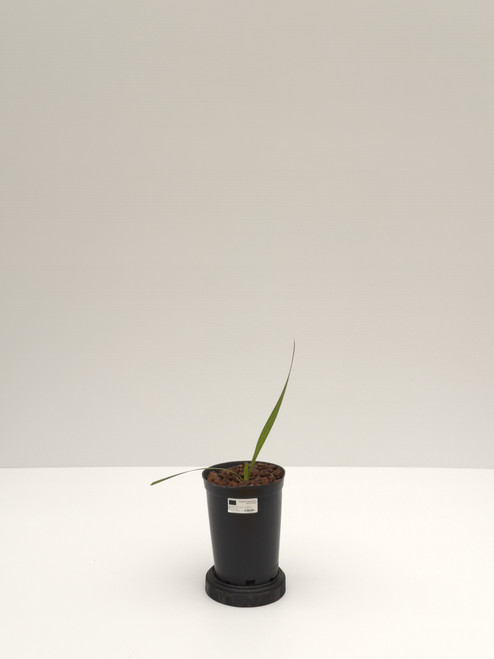Product Description
Habitat and Distribution
Copernicia baileyana is native to dry savannahs and woodland areas, of Eastern and central Cuba.
Description
A solitary palm, 10 to 20 metres tall, with stems 40 (to 60) centimetres in diameter, and are sometimes swollen. The fruit is black, 1.8 to 2.3 centimetres long, and 1.8 to 2 cm in diameter. Solitary, large, fan-leafed palm, stiff, deeply segmented leaves. Whitish smooth trunk to 2 feet thick, and leaves bright green. Overall height to 45 feet with up to 20 foot spread. These fans are glossy, or almost wax like.
Culture
In its native range Copernicia baileyana, grows in poor soil and under dry conditions. Prefers alkaline to neutral soils. Growth rate slow to moderate. Can tolerate cold snaps into high 20s. Some salt tolerance. Can tolerate short term flooding. Normally considered a slow grower, it responds exceptionally well to fertilization and moist well drained soil. Light: Likes bright, sunny conditions but will tolerate partial shade. Bailey palm does best in full sun. Moisture: Bailey palm is highly tolerant of drought, but thrives in moist soil with good drainage. Hardiness: USDA Zones 9B - 10. Adult Bailey palms are considered cold hardy down to about 24-26ºF (-3.3 - -4.4ºC), but foliage damage may occur at these temperatures. Propagation: By seeds which germinate in from 4 to 12 weeks.
Comments and Curiosities
Uses: The leaves are used for weaving hats, baskets, and other items. They are also used for thatch.
A truly magnificent and stunning palm from central and eastern Cuba, where it grows in savanna and dry woodland at low elevations. It forms a very thick and sturdy, smooth, slightly ventricose, whitish gray trunk that can reach about 20 m (67 ft.) tall. It supports a dense crown of numerous very rigid, stiffly ascending leaves with a perfectly circular outline. It is best suited for the tropics or warm subtropics. Seeds are reasonably easy to germinate but young plants are slow growing and take many years to start forming a trunk. (RPS.com)













